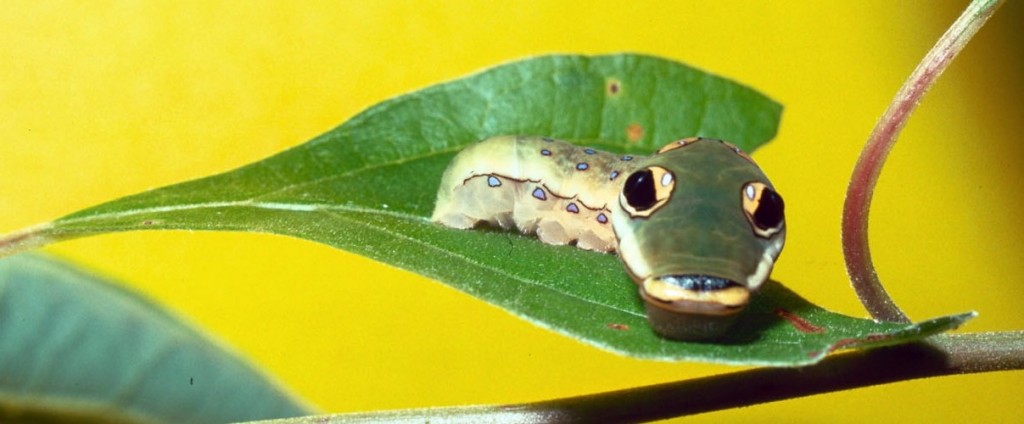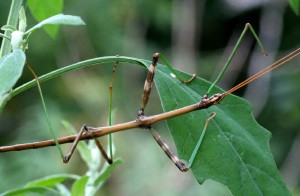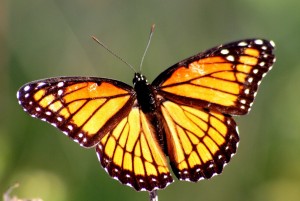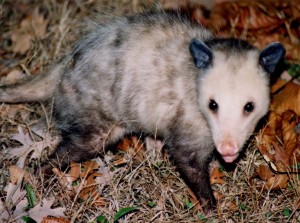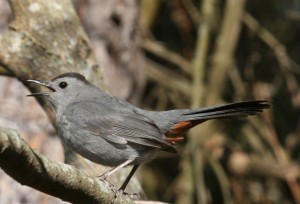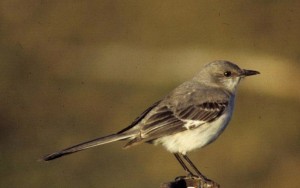Nature’s Doppelgangers: Survival Strategy of the Soundest Sort
“Let’s pretend to be…..” can be the opening to a fascinating adventure, but, and sadly for most of us, is a phrase confined to childhood years. Pretending to be something or someone else is widely held as not-very-adult human behavior. In the natural world, however, pretense proves to be an amazing strategy and one that may be used throughout life. Rather than a dismissive “imitation as the highest form of flattery,” mimicry in nature is an evolutionary adaptation that can and does result in the highest numbers of surviving offspring.
Our bluff lands abound with “doppelgängers,” a 19th century German word meaning “double-goer” and originally meant as a reference for an apparition, ghost, or double of a living being. Animal doppelgangers in our lands include look-alikes, sound-alikes, and act-alikes.
Several insect species physically resemble and look like something they are not. In some cases, an insect will have colors and/or shapes that camouflage them, causing them to blend and even disappear into the background, a form of mimicry called “crypsis.” Our common Walkingstick, a harmless four-inch long, wingless
insect, looks exactly like a twig as it sits in its characteristically motionless pose. Walkingsticks, which eat foliage, live primarily in deciduous trees, descending only to lay eggs in the soil for new generations. Their near-perfect mimicry protects them from predation by birds and small mammals and, for us, these double-goers are invisible and unnoticed until a sudden wind drops a living twig near our feet or under our dog’s nose.
The Goatweed butterfly also practices a form of mimicry based on vegetation. These three-inch wing-spanned butterflies overwinter as adults in the bluff lands. They will appear in early spring and spawn a second generation, of greater numbers than the survivors of winter. Members of the second generation remain active into the fall, when adults of this cohort enter hibernation. Goatweed butterflies are brightly colored on the upperwing surfaces, with males sporting bright orange-red and females with somewhat duller, though still showy hues. The gaudy coloration only is apparent during flight, for Goatweed butterflies invariably fold-up their wings when they land and perch. The cryptic mottling and shading of the gray-brown underwings resembles dead leaves, a camouflage disguise made more perfect by the small tail which seems to be the “stem” attached to the “leaf” as the butterfly sits still along a tree trunk or grass blade. In this butterfly’s case, only the underside of the adult’s wings is designed to look like something else.
For other species mimicry is not the hidden secrecy of camouflage but is a bold-faced deception of undesirability. Spicebush Swallowtail Butterflies have found such warning-away mimicry adaptive in two of their metamorphic stages.
These lovely butterflies are abundant throughout the summer in our bluff lands. Spicebush butterflies lay their eggs only on sassafras trees or on spicebush (Lindera) shrubs. Newly hatched larvae feed on foliage while metamorphosing through several life stages – called instars – of caterpillars. The first instars of Spicebush butterfly larvae resemble bird droppings, a mimicry that discourages would-be predators with the message “why bother putting your beak – or mouth – around this?” Later instars send a more fearsome message. The by-then large, fat, bright green and eminently good-enough-to-eat-looking caterpillar frightens away predators with two very large colorful patches on its head that look like the eyes of a snake, and scare away a would-be diner.
Repelling a would-be attacker is a common tool in the strategy kit called mimicry. Most predators spit-out and discard a Monarch butterfly before swallowing – a reaction to the very bad taste of all its body parts due to the ingestion of toxic compounds during all larval instars. Adult Monarchs lay their eggs only on plants of the milkweed family, plants that contain alkaloids, poisonous to nearly all other animals. Adult butterflies carry these toxins and are so unpalatable that most Monarchs escape predation attempts with only a tiny tear from a wing or foot.
Monarchs have so successfully schooled predators with their “don’t even look hungry around me” coloration, that they have their own, nearly exact doppelganger. The Viceroy Butterfly, a near perfect look alike is another case of mimicry in action.
Although a Viceroy is slightly smaller than a Monarch, it is very difficult to
distinguish between the two, especially with the reaction speed a predator requires. Indeed, only a telltale thin transverse black line through the hindwings of a Viceroy allows field identification of the two. Most predators can’t tell the difference. Viceroys get to enjoy their safe livelihood through deception rather than by the ingestion of toxins during their lifespan.
Beyond looking like something they are not other animals practice mimicking. The “let’s pretend” in these cases is an act done for defense or, sometimes, to attract a mate.
Playing ‘possum — a catch phrase for fooling one’s enemy – is a widely known illustration of mimicking. When faced with imminent danger, an opossum will mimic death, falling on its side, with eyes closed and tongue sticking out, and even is able to shut down its pulse and heart rates. You could – and dogs sometimes do – shake a “dead” opossum like a rag doll but not interrupt the act. However, once the danger has passed – the dog follows its nose to another interest – the opossum gets up and scrambles out of danger.
While not playing dead, a Copperhead Snake will lie still and unmoving when it perceives danger. Like many insects, Copperheads rely on cryptic coloration to help them disappear into the background. Colored like the dead leaves of the forest floor where it makes its home, a copperhead remains calm and very still when faced with danger, waiting only for the threat to pass before gliding safely away to get on with its life concerns. A hiker faced with a copperhead near the trail need not fear that the snake is defiantly “standing its ground,” but should realize that the snake is simply trusting in its own camouflage, blending into the background to avoid attack and harm.
Our common Black Rat Snake residents of the bluff lands also mimic when cornered. Far from playing dead, they act like an armed defender, a rattlesnake. When faced with danger a Black Rat Snake will coil-up its body, hiss and tongue-dart and shake its rattle less tail in perfect, though soundless, imitation of an Eastern Timber Rattlesnake.
While a silent imitation is quite functional from a Black Rat snake’s perspective and may even frighten away an avian predator, several species of birds have developed a mastery of mimicking based on sound.
Pranksterish Blue Jays can perfectly imitate the loud calls of Red-shouldered, Red-tailed and Broad-winged Hawks. Blue Jays often use this sound technique to frighten and flush away other birds from backyard feeders and so are able to feast on seed or suet without sharing.
Gray Catbirds, summer residents of our bluff lands, can imitate up to 35 other
species of birds and also can do a very credible impersonation of a tree frog’s call. But their common name and claim to fame is based on their ability to “meow” just like a domestic cat. More than a few adults and even fire departments are reported to have responded and put ladders into treetops hoping to rescue a stranded kitty-cat. But the slender gray bird with a bright chestnut undertail patch was never in need of help.
The grand prize for mimicking based on sound goes to Northern Mockingbirds, the impresarios of vocal impersonators. Their plagiarized repertoire increases with age; some individuals can imitate the songs of more than 200 other bird species. Mockingbirds also can mimic croaking frogs, barking dogs and machinery. At least one mockingbird, living near an Army gunnery range, mastered the vocal art of machine gun fire. For this species mastery of a large number of songs and sounds enables greater breeding opportunities as a number of studies show. Older birds with a greater range of song types more easily attract and keep mates in comparison with younger birds that have learned only a limited number of tunes.
Speed at learning songs can provide an individual bird the opportunity to catch up with his elders, even in the same breeding season. Since mockingbirds raise several broods during a season, female mockingbirds are able to choose whether to remain with the same mate or to take a new one at the advent of each nesting cycle. The successful male has, each time, won the wooing contest by demonstrating the greatest number of songs. With no mention of the females’ potential for fickle behavior, which is the root cause of the male’s loud defense of home territory, the Texas legislature sang the praises of the species. The 1927 resolution, naming the Northern Mockingbird state bird, notes that it “…is a singer of distinctive type, a fighter for the protection of his home, falling, if need be, in its defense, like any true Texan.”
Fulsome praise, indeed, for our greatest exemplar of sound mimicry. Imitation in the natural world has little to do with flattery but is a survival strategy of the soundest type.
Clifftop, a local nonprofit organization, is focused on preserving and protecting area bluff lands.
Versions of this article appeared in the February 4 2009 edition of the Suburban Journals Clarion Enterprise, and in the February 6, 2009 edition of the Monroe County Independent.
© 2009 all content rights reserved, Clifftop NFP.
Comments are currently closed.

